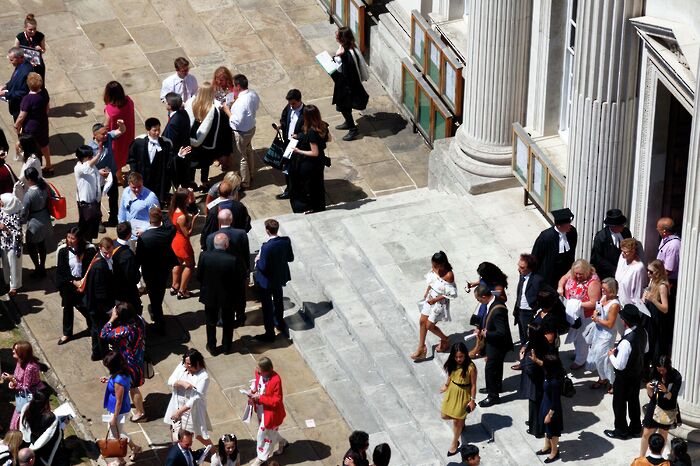Analysis: Cambridge’s state school intake slowly increased towards its 2024 target. It’s a new record, but familiar news.
Cambridge is aiming for a target of 69.1% of their intake educated at a state school by 2024. Improvements have been made annually, and each year, national news outlets parade it as a ‘new record’

An early press release published by the University of Cambridge has said that 68% of undergraduate students matriculating in Michaelmas 2019 have been educated at a state school. More students from deprived areas have also gained a place, where one in four students will be from under-represented and disadvantaged backgrounds in the 2019 intake.
The state school intake figure is a moderate increase from 65.2% last year in 2018-2019 and 64.1% in the 2017-2018 cycle, as Cambridge aims for a target of 69.1% by 2024-2025.
Taking from Cambridge’s press release, The Guardian, BBC, and The Telegraph all cited the 2019 figure as a record high, with records going back to the 1980s. For 2018, national news outlets published near identical headlines. And for 2017.
The percentage of state-schooled entrants to Cambridge is lower than elsewhere in the UK. Between 2013-2018, the number of state school students in UK higher education institutions has been at least 90% per year.
Want to join Varsity's news team?
Try your hand at student journalism. Applications are now open for Varsity News Correspondents in Michaelmas term
The new undergraduate admissions statistics fall within a broader context of continued, ongoing concern around inequality in admissions to the University. In 2018, Cambridge was identified as ‘the most unequal university’ in the UK. Cambridge’s acceptance of state school students continues to be among the lowest of UK higher education institutions.
The Office for Students, a new regulatory body for higher education, is also placing more pressure on Cambridge, among other Russell Groups, to “rebalance” their intakes as they review post-18 education and admissions. Last year, the OfS also called on institutions charging the maximum tuition fee of £9250 to lay out an “access and participation plan” on how they will specifically improve opportunities for disadvantaged students.
Class Act Vice President Colin Kaljee told Varsity that whilst “the latest figures are a step in the right direction”, Cambridge’s target of 69.1% “is not ambitious enough”.
Kaljee added that “even within the 68% intake of state schools, the dominance of selective grammar schools compared to comprehensive and non-selective schools ensures [that] Cambridge remains disproportionately white and middle class”.
When asked about the type of schools included within the category of ‘state school’, a University spokesperson told Varsity that more information is not yet currently available but would be released in Spring 2020.
This is also the first year that Cambridge has participated in the UCAS Adjustment scheme, which was introduced at other UK institutions in 2009. Adjustment allows students who have exceeded the grades outlined in their conditional offer to refer themselves to be considered by another institution.
67 disadvantaged students were accepted through UCAS Adjustment after exceeding their conditional offer.
These reported statistics only refer to the numbers of entering undergraduate students. Information on pre-degree level study of Graduate students is not obtained during the application process.
 News / Candidates clash over Chancellorship25 April 2025
News / Candidates clash over Chancellorship25 April 2025 Music / The pipes are calling: the life of a Cambridge Organ Scholar25 April 2025
Music / The pipes are calling: the life of a Cambridge Organ Scholar25 April 2025 Interviews / Dr Ally Louks on going viral for all the wrong reasons25 April 2025
Interviews / Dr Ally Louks on going viral for all the wrong reasons25 April 2025 News / Cambridge professor paid over $1 million for FBI intel since 199125 April 2025
News / Cambridge professor paid over $1 million for FBI intel since 199125 April 2025 Arts / Plays and playing truant: Stephen Fry’s Cambridge25 April 2025
Arts / Plays and playing truant: Stephen Fry’s Cambridge25 April 2025







